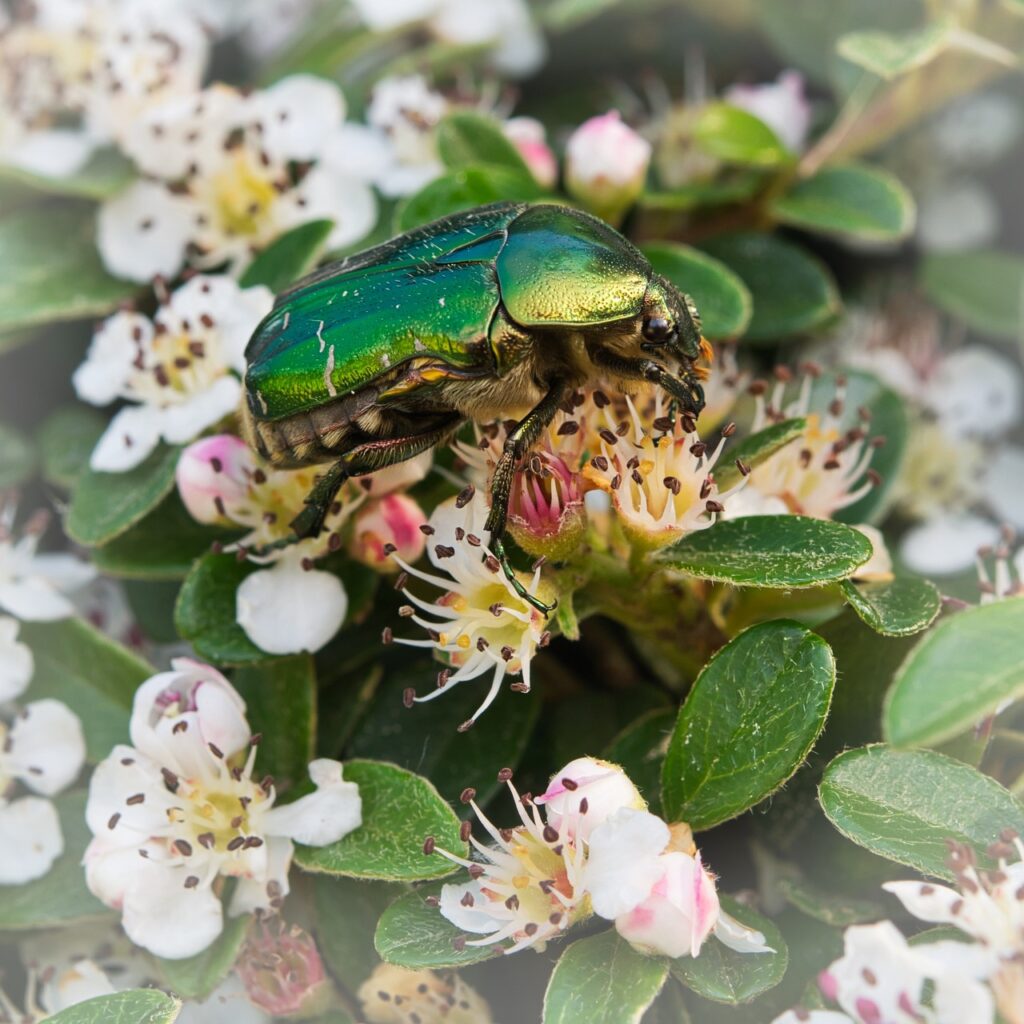There is life here albeit hanging on by a thread, is a writing prompt from my current work in progress, as yet untitled. The section it comes from is shown below. The story is a sequel to River Witch and a dual timeline – having fun with that!
He rides the dusty ridged lane which leads to Mother Lovell’s cottage and nowhere else. Either side, a profusion of dog rose scrambles through overgrown hedgerows, adding their light sweet scent to the warming air.

The pale pink edges of the white blooms and their golden stamen remind Aaron of Rose as a babe, with her pink cheeks and golden fuzz of hair. The child is aptly named, not least for her occasional thorniness.
He grimaces as he allows the horse to pick its slow way among the ruts.
A familiar elm rises from the hedge on the curve of the lane, and there is the cottage. White smoke drifts thinly from a stone chimney, both smoke and chimney silhouetted against the bright blue of the sky. There is life here albeit hanging on by a thread. Honeysuckle hides the once whitewashed walls and has found purchase in the thatch, battling mats of summer-dried moss. The grimy paned windows are barely visible, patches of rotting wood sinking beneath the yellow creeper.
Follow the writing prompt on Facebook.
Find Cheryl’s flash fiction and short stories, including audio versions of some, here!
Did that at Phillip Island in 1964😂
We knew no better!
THERE IS LIFE HERE, ALBEIT HANGING ON BY A THREAD
Astronauts Mark Taylor and Sean McKenzie held their breath as their craft slowly descended to the Mars surface.
This was a momentous moment in history for, after years of meticulous planning, they were about to become the first humans to set foot on the planet.
As the space capsule continued to decelerate, they checked that all the instruments were still functioning properly.
Finally, with a soft thud, they had arrived in one of the many gullies that dotted the dusty red surface and prepared to begin their exploration.
First, they donned spacesuits and helmets specially designed to deal with the Martian climate – followed by oxygen tanks to enable them to breathe while walking outside their craft.
Mark checked his communications with command centre control at Houston, Texas before leaving the craft.
“Houston, this is Mars Lander One,” he informed them. “We have arrived safely on the surface and are about to begin our investigations.”
Because of the vast distance from Earth, both astronauts were obliged to wait a few minutes before they received a response.
“Receiving you loud and clear Mars Lander One,” a voice crackled back. “Go ahead and start your exploration. We will be able to monitor you on the spacecraft cameras.”
Mark opened the hatch and stepped onto the Martian surface, resisting the urge to repeat Neil Armstrong’s famous phrase during his 1969 Moonwalk (“One small step for man, one giant step for mankind”), closely followed by Sean.
Knowing that they only had an hour’s oxygen at best, the two men had already planned their exploratory route in fine detail.
As far as the eye could see, the predominant soil colour was a rich red, denoting Mars high iron content, hence its nickname “the Red Planet”.
Even at this early stage of investigation, the terrain looked like it could have once featured ancient rivers and, in the distance, they spied what looked like a glacier.
Nothing moved, fortunate for the two explorers as the planet was often subjected to severe dust storms for days or even months on end.
About 15 minutes into their journey, the astronauts stumbled on a cave and decided to check out the interior. Switching on their head flashlights, the beams highlighted pockets of erosion, probably sustained millions of years ago when the terrain was subjected to active geological eruptions.
As they examined the cave’s walls in more detail, Mark thought he detected movement.
“What was that?” he asked Sean through his intercom.
“What was what?” replied Sean.
“That, over there on the wall. See it.”
“Geezes, it looks like some sort of primitive creature. Do you think it is alive?”
“Could be,” said Mark. “Let’s have a closer look.”
The two men shuffled forward a few paces, fixing the “whatever it was” in their flashlight beams.
The creature appeared to be several centimetres long, black in colour, with hundreds of legs helping it to cling to the rock.
“Looks like some sort of centipede,” commented Sean. “Doesn’t look too healthy, though.”
As the two men watched, the creature slowly lowered itself to the cave floor and disappeared into a dark crevice.
“Don’t think it likes our lights,” said Mark. “But I definitely think it’s alive, although maybe only just.”
Underneath his helmet, Sean sounded excited.
“We need to report this,” he enthused. “They’ll never believe it back on Earth.”
“We must to get a picture just so they know we are not pulling their legs,” Mark laughed.
With careful precision, the two men illuminated the crevice into which the creature had crawled and could just make out its head and eyes.
Pulling their specially adapted digital camera from its bag, Mark aimed and pressed the button. A quick check of the screen and he confirmed they now had a clear record of the Martian inhabitant.
“Ok,” he said. “Let’s get back to the Mars Lander so we can let Houston know what we have found.”
Safely back aboard the spacecraft, Mark and Sean uploaded the photo to the onboard computers and prepared to transmit the image.
But first they signalled the command centre, barely able to contain their excitement.
“Mars Lander One to Houston. You’ll never believe what we have found. There is life here, albeit hanging by a thread.”
Reminds me of shining torches and flash cameras into fairy penguin burrows in the 70s!